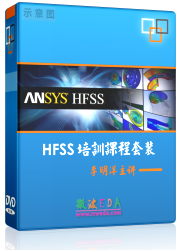Why are the memory numbers reported different in v11 and v10 profiles
文章来源: 互联网 录入: mweda.com
First review two comparable adaptive pass profiles in v10 and v11
V10
Adaptive Pass N Frequency: 2.45 GHz
mesh3d_adapt_FT
00:00:11 00:00:10 61 M 49690 tetrahedra
p1_solve
00:00:01 00:00:00 10.2 M 92 triangles
adapt_part1
00:00:23 00:00:23 155 M 49690 tetrahedra
Solver MCS2
00:01:34 00:02:33 1.36 G 308322 matrix, 165MB disk
adapt_part2
00:00:06 00:00:06 140 M 49690 tetrahedra
Adaptive Passes converged
V11
Adaptive Pass N Frequency: 2.45 GHz
g3dm_vadapt
00:00:12 00:00:12 83.8 M 44820 tetrahedra
Simulation Setup
00:00:05 00:00:05 61.8 M Disk = 0 Kbytes
Matrix Assembly
00:00:10 00:00:09 208 M Disk = 0 Kbytes, 43994 tetrahedra , p1: 106 triangles
Solver MCS2
00:01:30 00:02:44 1.43 G Disk = 0 Kbytes, matrix size 278139 , matrix bandwidth 22.0
Field Recovery
00:00:04 00:00:04 1.43 G Disk = 3118 Kbytes, 1 excitations
Adaptive Passes converged
Some questions that may arise are…
1)
In v10, for more tetrahedra there is less memory used than in v11 (but v11 solved faster real time but slower CPU time). These results are difficult to reconcile. Is there an explanation for this? Is this related to how things are reported or related to the new matrix generation/solving in v11?
2)
For this on-core solution (8GB RAM on solution machine) in v10, 165 MB is written to disk. What exactly is written to disk in v10; fields, mesh? Is there a corresponding value for v11?
3)
Why is the memory used for the solver and field recovery identical in v11?
HFSS11 is structured much differently from HFSS10. In HFSS10, adapt_part1, solver and adapt_part2 are standalone executables. They communicate through files and, of course, need disk usage. The RAM reported is peak memory for each executable. In HFSS11, Simulation Setup, Matrix Assembly, Solver and Field Recovery are library calls. They communicated through memory, which is typically much faster than file I/O. No disk usage is required until necessary, such as in the case of off-core direct solver and a large number of right hand sides. The RAM reported in profile is peak memory for the entire solution process. That's why you get the same RAM for Solver and Field Recovery since the peak RAM happens in Solver. Field Recovery actually uses far less RAM.
In HFSS11, while matrix solver is being invoked, other data like mesh, material and boundary still sit in memory. In other words, the RAM reported for Solver in HFSS11 not only includes memory for matrix but also for mesh and others. In HFSS10, only the matrix is in memory while solver is being invoked. The RAM reported in profile is for matrix only.
The CPU and real time difference is mainly caused by VC++ compiler and Intel Fortran library (low level math libraries). As you can imagine, while HFSS has different versions from time to time, so do the VC++ compiler and some low level system math libraries. They may cause differences in solver speed.
微波EDA (www.mweda.com) 网友回复:
-
网友回复
好帖啊.顶~~
用下来11快很多.但好象没10准~~ -
网友回复
看帖,回帖~,英文的,欧洲~。呵呵~ -
网友回复
恩,很有意义,v11的确是更充分的利用了内存,就如同vista的策略一般,软件厂商都看到用户的内存是个金矿——我只是希望v11计算速度的加快不仅仅是因为这个原因。 -
网友回复
看帖,回帖~,英文的,欧洲~。呵呵~
申明:网友回复良莠不齐,仅供参考。如需专业解答,推荐学习李明洋老师的HFSS培训视频,或咨询本站专家。
-

国内最全面的HFSS培训课程,包含7套视频教程和2本教材,资深专家讲解,视频操作演示,结合最新工程案例,让HFSS学习不再难...【详细介绍】
- Ansoft HFSS 3D Post Proces…
求初级的视频
HFSS仿有载Q值的建模问题
怎样用matlab 调用 HFSS 接…
关于DGS在HFSS中仿真的问题
怎样在HFSS中看两个天线的Gr…
hfss11-求解激励的问题
请教一下 在HFSS里面如何计算…
如何将HFSS的仿真结果导入mi…
HFSS11和CST2008是否支持四核…
- · HFSS视频培训课程
- · HFSS电磁仿真设计应用详解-在线阅读
- · HFSS教程
- · HFSS百科问答

